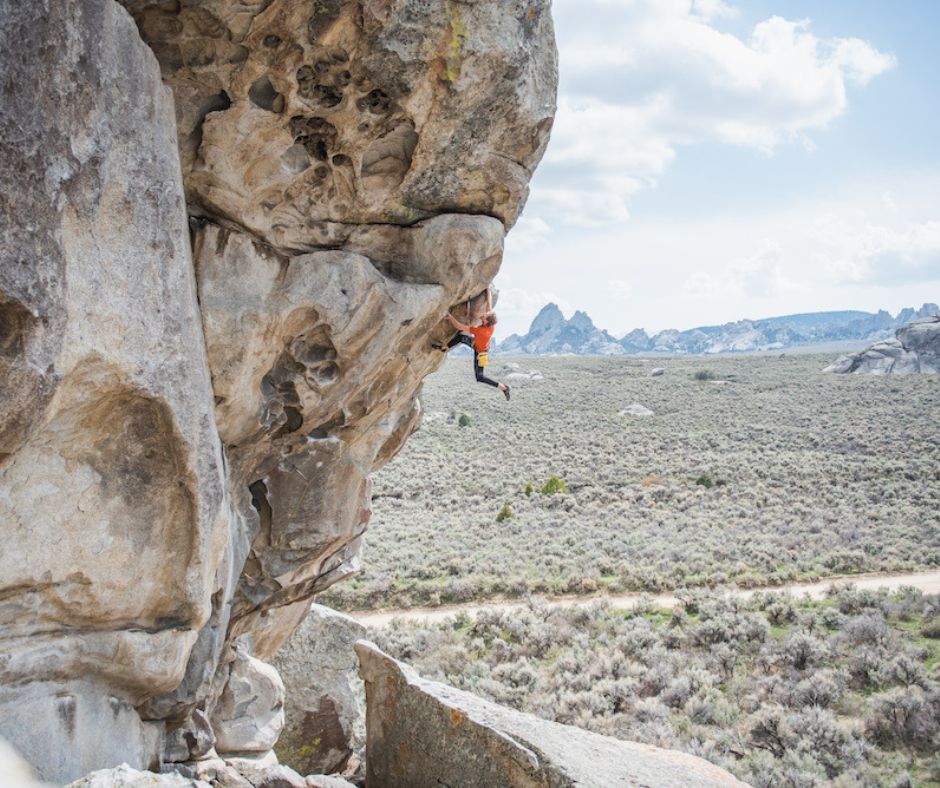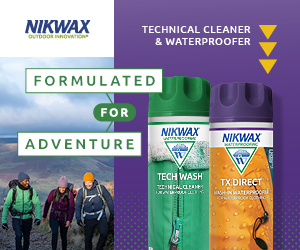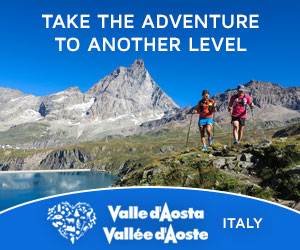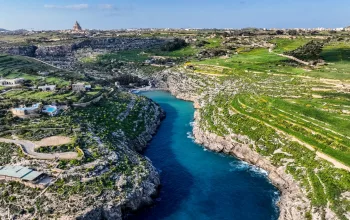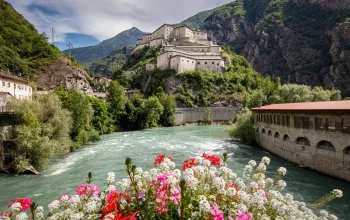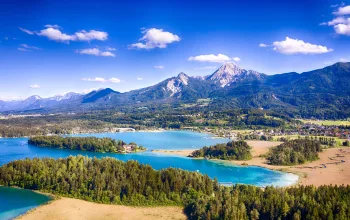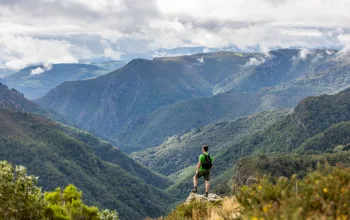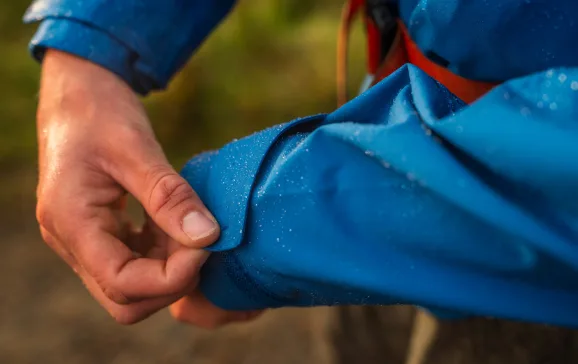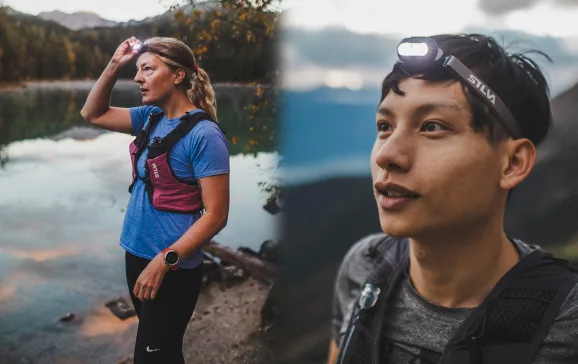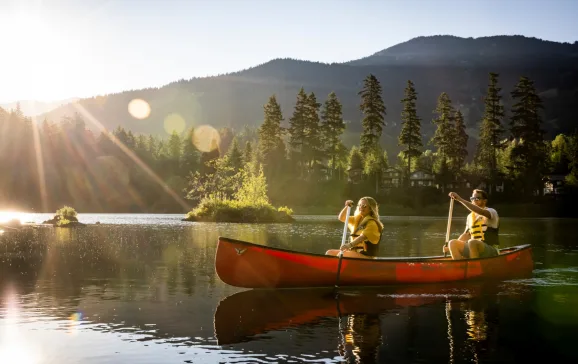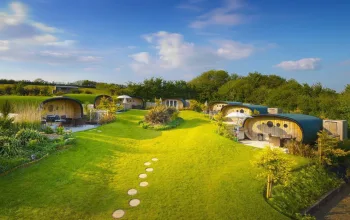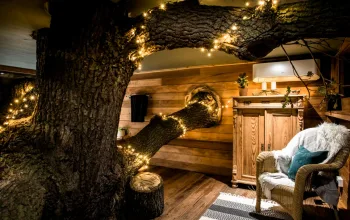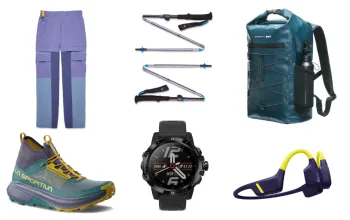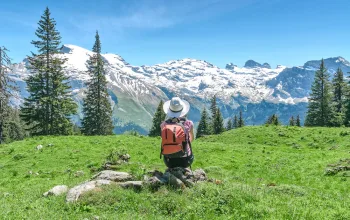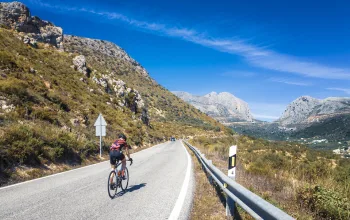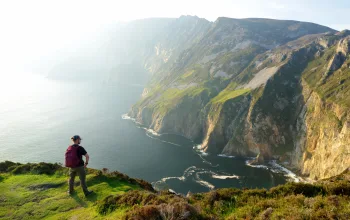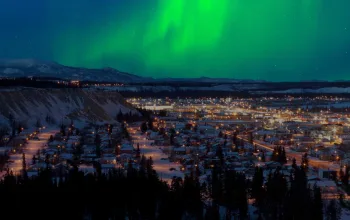Charlie Low and Dale Comley are fully signed up members of the adventure van life community. Authors of the bestselling book, The Van Conversion Bible, Charlie and Dale travel the world in their campervan, Ringo, while running their business, Nohma. When they’re not working, they'll can be found up a cliff or on a paddleboard.
"In April 2021, we quit our jobs, rented out our house, moved into our van, and published a book - all in the same week. Suffice to say, we don’t do things by halves. Over the past 4 years, we’ve travelled the world in our campervan while growing a fully nomadic business - Nohma. Our journey recently took us on a year-long climbing road trip across the Americas, from the East Coast of Canada to the dramatic peaks of Patagonia in South America.
It was really hard to cover everything, so in this article, we have focused on the North American half of the trip, aiming to highlight some of the very best and lesser-known gems in the US. From the hidden sport climbing paradise of The Fins in Idaho to the dramatic crack systems of Vedauwoo, Wyoming, our route was dictated by seasons, climbing styles, and an eagerness to explore beyond the usual spots. We visited over 30 varied climbing areas in the states and these were some of our favourites.

But before the adventure could begin, we had to tackle the not-so-small challenge of shipping our campervan from the UK to North America. To avoid the long, costly detour through the Panama Canal (which we’d have needed to reach the West Coast and most of the crags on our list), we decided to send Ringo to Halifax, Canada—the closest port to home.
Dropping off our rolling home in Liverpool was nerve-wracking. Would it get damaged? Stolen? Lost at sea? We anxiously tracked the vessel’s progress from an Airbnb in Halifax, refreshing the shipping updates more times than we’d like to admit.
When the ship finally docked, we hit another hurdle - customs. A maze of inspections, paperwork, and unexpected fees stood between us and our van. But after shelling out a few thousand pounds and holding our breath through every checkpoint, we watched Ringo roll off the ship, bright yellow and completely intact. Worth it. With everything finally in place, it was time to hit the road and cross into the US.
Red River Gorge, Kentucky
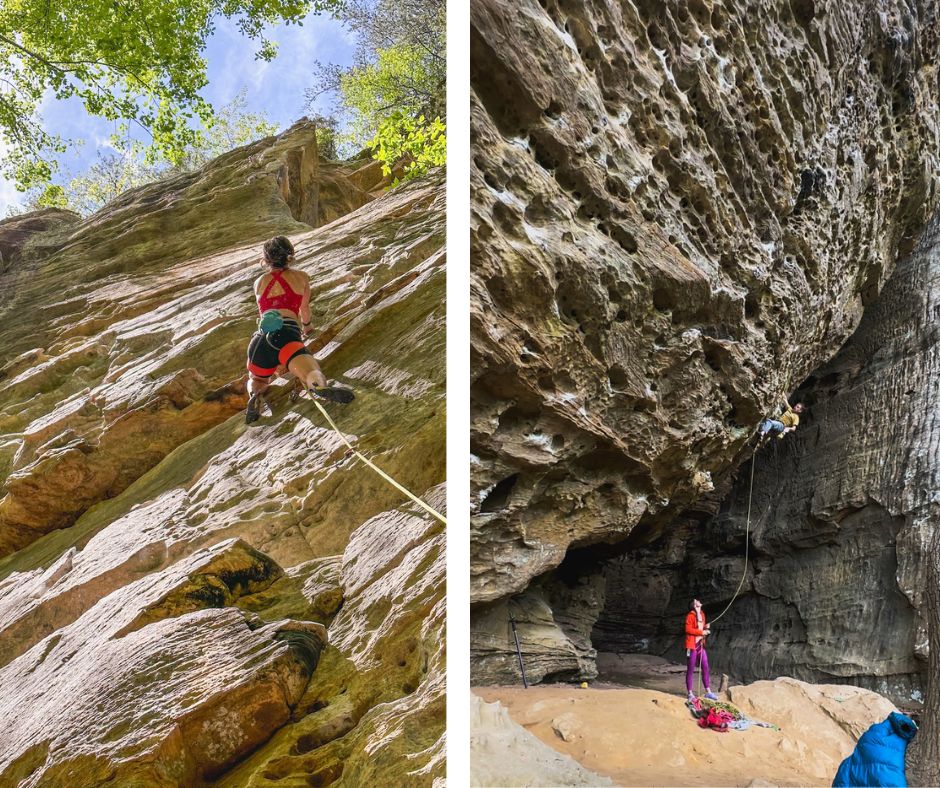
Our first major climbing stop: Kentucky’s legendary Red River Gorge. Known simply as ‘The Red’, it’s a mecca for steep sandstone sport climbing - endless jug-hauls through caves and overhangs, with world-class routes at every grade. Whether you’re a beginner or chasing elite test pieces, The Red delivers.
For us, it was a baptism by fire. We were used to more technical, vertical European sport routes, so throwing ourselves straight into overhanging pump-fests was a shock to the system. But it didn’t take long to embrace the burn and get stuck into the local classics. Like any world-class crag, The Red has its own style, and it takes a week or two to really dial in.
When we planned this trip, we knew we’d only have time to spend a week or two in each of the very best areas if we wanted to see everything on our list. But one thing’s for sure - The Red is high on our list for a much longer return trip.
Vedauwoo, Wyoming & City of Rocks, Idaho

Heading west, we couldn’t resist a detour to Vedauwoo, Wyoming - a notorious crack climbing area where even the so-called "easy" routes felt desperate, if not downright impossible. Case in point: Dale, usually comfortable onsighting 5.13 sport routes, got completely shut down on a 5.10 off-width. Twelve grades easier, yet somehow infinitely harder.
Humbled but not defeated, we pushed on to Idaho’s City of Rocks - a lesser-known gem where house-sized granite boulders are scattered across alpine meadows. The setting was breathtaking, and the featured rock offered everything from hard sport routes to epic crack lines and pristine bouldering. After the brutality of Vedauwoo, this was exactly what we needed.
With world-class climbing just steps from our van, framed by snow-capped mountains, this was the first moment in the trip where it all clicked - this was what we came for. Every ounce of effort, every penny spent, felt completely worth it.
The Fins, Idaho
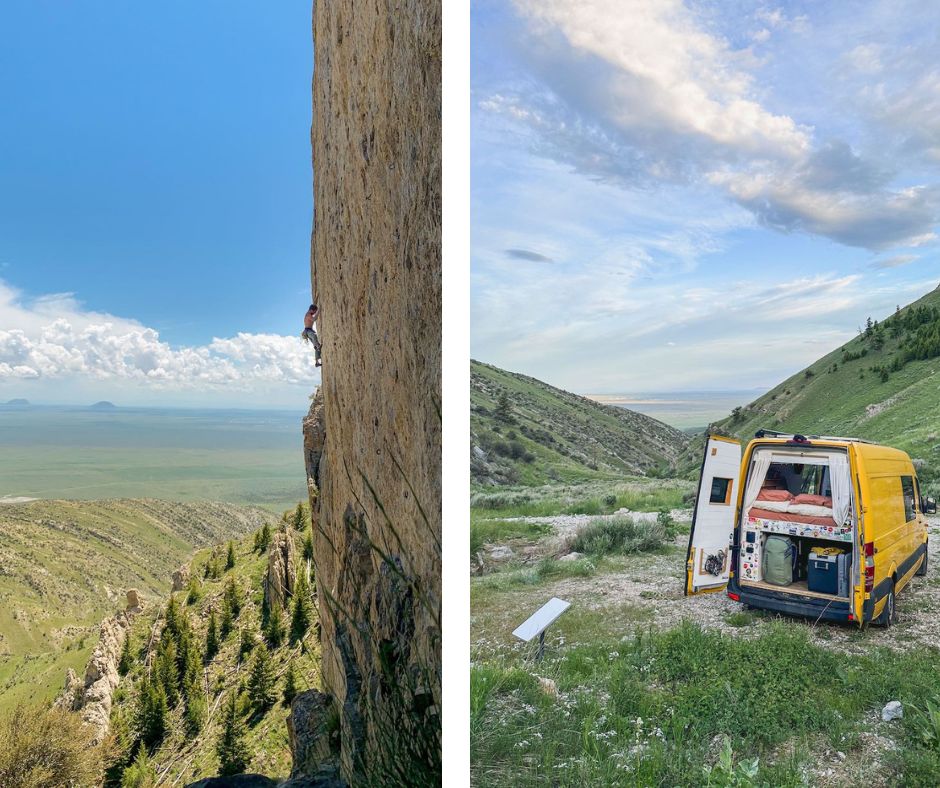
By this point, we were fully converted Idaho fans. We’d never even heard of The Fins before the trip, but after countless recommendations from fellow climbers calling it “a slice of Céüse in Idaho” - we had to check it out. With towering blue-and-yellow streaked walls reminiscent of the legendary French crag, it quickly became one of the biggest surprises of our trip.
Getting there, though. That was an adventure in itself! The remote approach and steep access track came with guidebook warnings of 4x4s tipping over on the off-camber terrain - hardly reassuring. But after a nerve-wracking drive, we rolled into one of the most incredible plum vertical limestone walls we’d ever seen.
We ended up staying nearly two weeks, alternating between tackling The Fins’ long, pocketed routes and working remotely from our wild camp spot. After countless days climbing on Discovery Wall (and enduring the brutal hike up every single time), we can safely say the Céüse comparisons aren’t just about the rock - it’s got the walk-in to match.
Yellowstone & Grand Teton National Parks
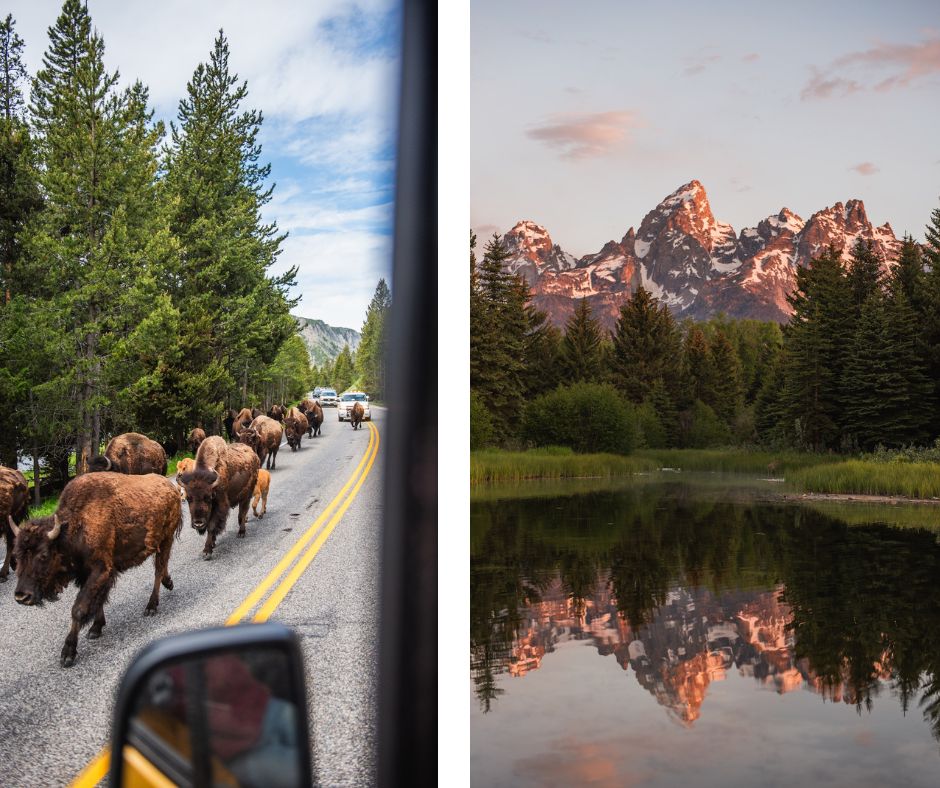
In need of a break from climbing, we set our sights on Yellowstone and Grand Teton National Parks - trading harnesses for binoculars and gearing up for some serious…people watching. Sure, the parks are home to incredible wildlife and jaw-dropping landscapes, but among the bison, bears, and geysers, there’s one species you can’t miss: tourists.
For a real taste of Yellowstone (and the best chance of spotting its more elusive wildlife), an early start is essential. At the crack of dawn, the park feels wild, almost untouched. But by midday? Let’s just say it’s hard to focus on nature when you're navigating a traffic jam in the middle of the wilderness.
The same rule applied in the Tetons - an early start made all the difference. We set off at dawn for Delta Lake, soaking in the peace and stillness of the mountains before the crowds arrived. The lake, framed by jagged peaks and reflected skies, felt almost otherworldly in the quiet. But on the way down? A different story. As the masses started their ascent, the once-serene trail turned into a bustling highway of hikers. Safe to say, the early alarm was well worth it.
Lander & Ten Sleep, Wyoming
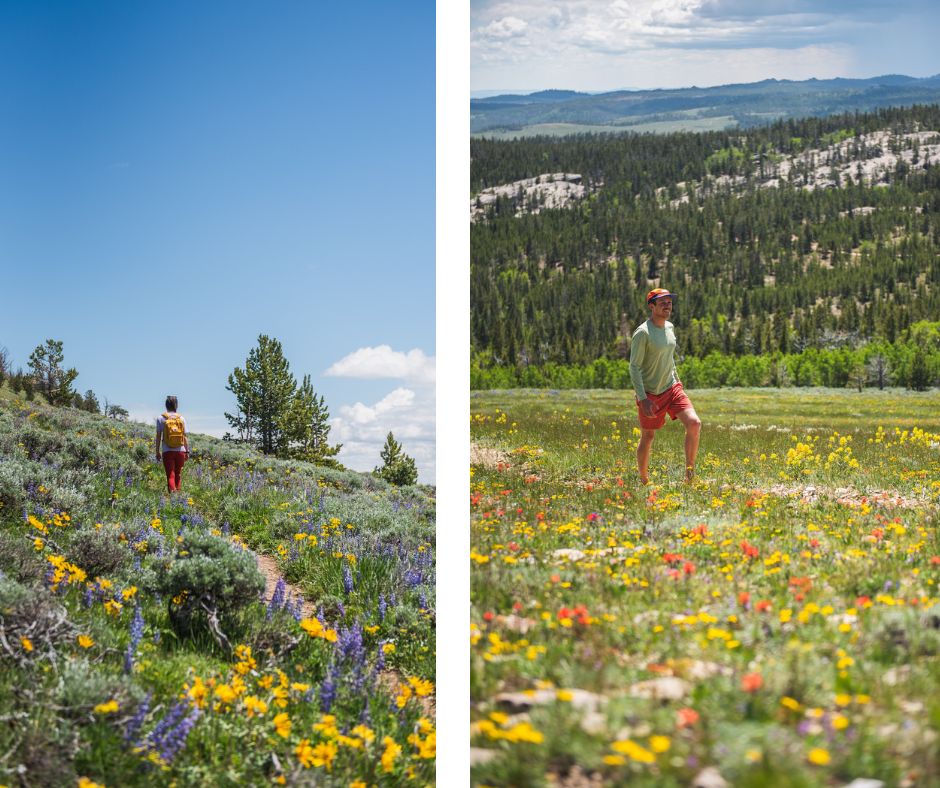
Wyoming turned out to be a summer climbing paradise. In Lander, we spent our days at Wild Iris, where pocketed limestone routes rise above meadows bursting with wildflowers. But the mountains don’t let you forget who’s in charge - a sudden thunderstorm mid-route and emergency phone alerts of baseball-sized hail were a sharp reminder of just how unpredictable the weather can be. (and to always pack your waterproof jacket - Ed!)
Next up was Ten Sleep Canyon, home to thousands of high-quality sport routes. The only catch? The lower elevations meant climbing in sweltering heat. Eventually, we found our escape: Crag 6, perched at nearly 2,800m, where cooler temps and stunning views made for the perfect summer escape.
Wind River Range, Wyoming
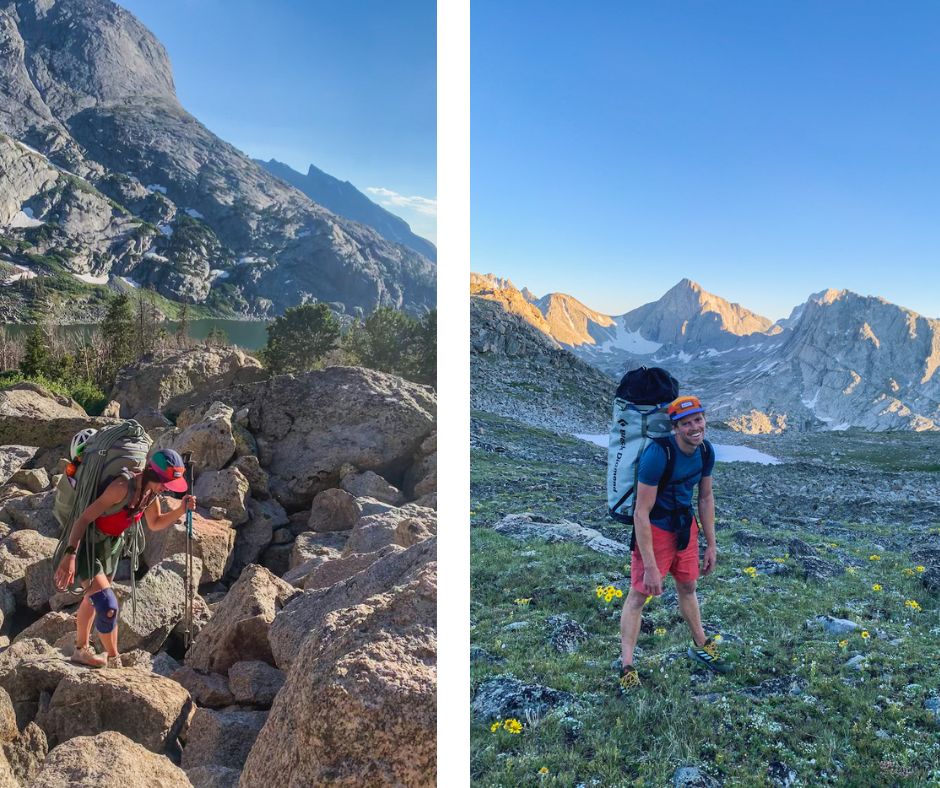
For our pick as the hidden gem of the USA, the Wind River Range took the crown - no swarms of selfie-stick-wielding Instagrammers here. But reaching those pristine alpine meadows? That’s another story. First, there’s a bone-rattling 40-mile drive on washboard roads, followed by a five-mile hike through biblical swarms of mosquitoes.
With our sights set on Icarus, a modern classic 5.11+ nine-pitch granite test piece in the Cirque of the Sun, we loaded up with mountains of gear, a backpacking tent, and enough water for a couple of days. The result? Bulging backpacks and a gruelling nine-hour approach - mostly off-trail - where we crawled along at barely a mile an hour under the weight of it all. By the time we set up camp, the sun was dipping below the horizon, casting an eerie glow over the rugged landscape.
Just as we started to settle in, a very large grizzly bear appeared a few hundred meters away. With the light fading fast (and our legs far too fatigued to make a run for it), we had little choice but to stay put - bear spray in hand - hoping for an uneventful night. Every rustle in the dark sent our nerves into overdrive, making sleep almost impossible.
At dawn, the sky was unrecognisable - thick, ominous clouds rolled in, making it clear that attempting the climb would be a terrible idea. Frustrated (but, let’s be honest, a little relieved), we packed up and braced ourselves for the long journey back. As we neared the van, the heavens opened, drenching us in cold, battering rain - but at least it gave us a break from the relentless mosquitoes, and a much needed wash!
The Monastery, Colorado
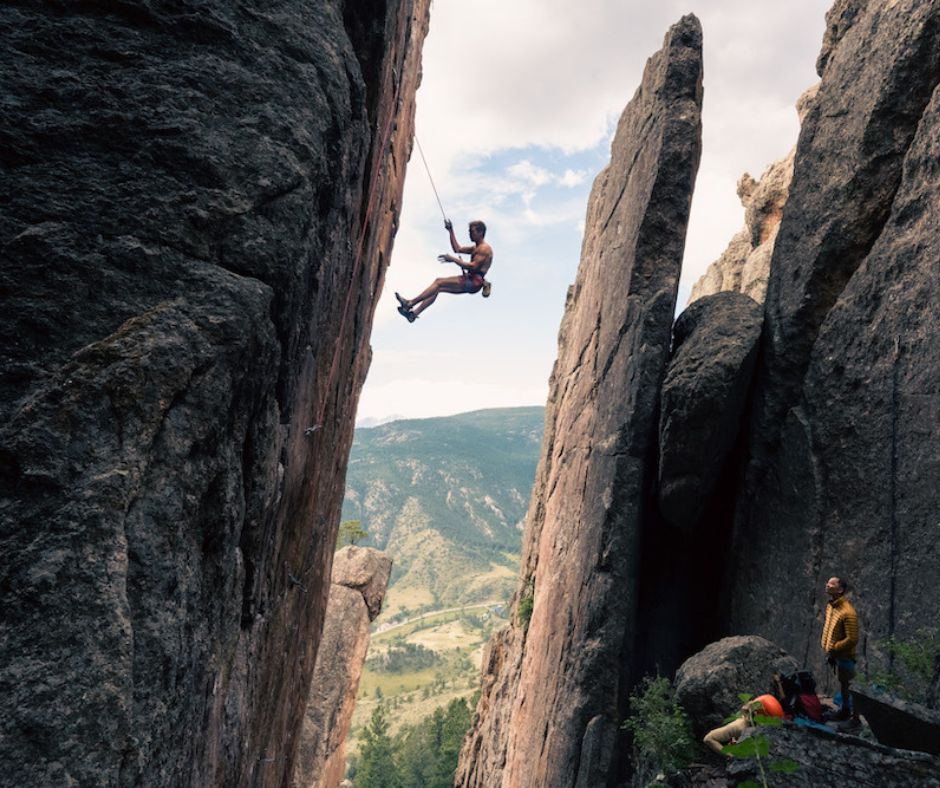
Still on a mission to escape the searing summer heat, we left the imposing beauty of the Wind River Range behind, crossed the vast Great Plains, and climbed back into the heart of the Rockies. Our destination? The Monastery - a hidden gem of steep, high-altitude granite sport climbing, with views that stop you in your tracks.
Tucked away in a narrow, leaning canyon, the climbing here is nothing short of immaculate. One side? A sheer 20-degree overhang lined with imposing 5.13s and 5.14s. The other? A parallel wall of beautifully technical 5.10s and 5.11s. No matter which side you take on, the rock quality is incredible. And just when you think it couldn’t get better, the constant buzz of inquisitive hummingbirds flitting between routes adds an extra touch of magic.
Namaste Wall, Zion
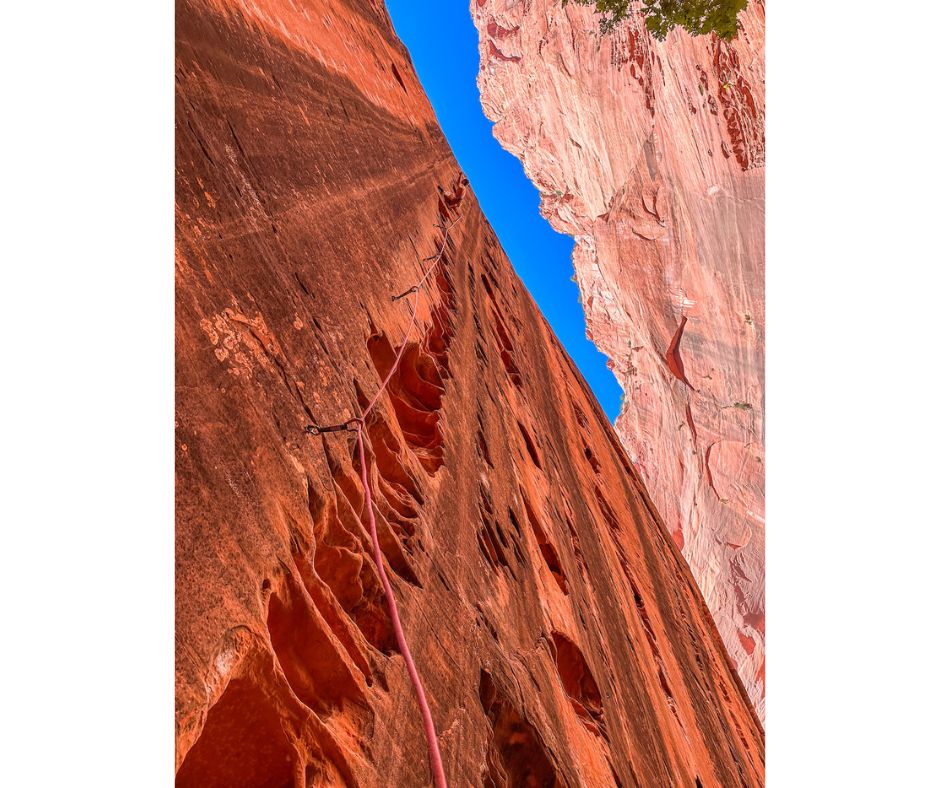
With the peak of summer behind us, we made our way to the iconic Zion National Park, eager to climb its towering orange valley walls. But heavy rain had other plans. With Zion’s fragile sandstone off-limits, we switched gears and headed into a side canyon - a breathtaking detour in its own right. The trail meandered through a deep, water-sculpted gorge of striking red rock, eventually leading us to a bone dry Namaste Wall - a wildly overhanging face peppered with huecos and pockets of all sizes.
If this wall were in the Peak District or anywhere else in the UK, there’d be queues snaking through the canyon just to get on it. But here? Completely deserted. We spent the day climbing every route on the main wall, stunned by the quality and even more stunned that we had it all to ourselves. That is, until the last climb of the day - when we finally figured out why.
Dale had just clipped a bolt near the top of the wall when, with zero warning, the entire bolt and hanger pulled straight out of the rock and into his hand. With the previous and next bolts spaced alarmingly far apart - and no real confidence in any of them—he did the only thing he could: shoved the bolt back into the hole and kept climbing.
The next moves were hard, sketchy, and ultimately, too much. With a panicked “Take!”, Dale fell - plummeting past the loosely wedged bolt, expecting the worst. But somehow, against all logic, it held. Dangling midair, staring at the half-pulled bolt that had just saved him, all we could do was laugh. Maybe that’s why Namaste Wall was empty!
Yosemite and the Tuolumne Meadows
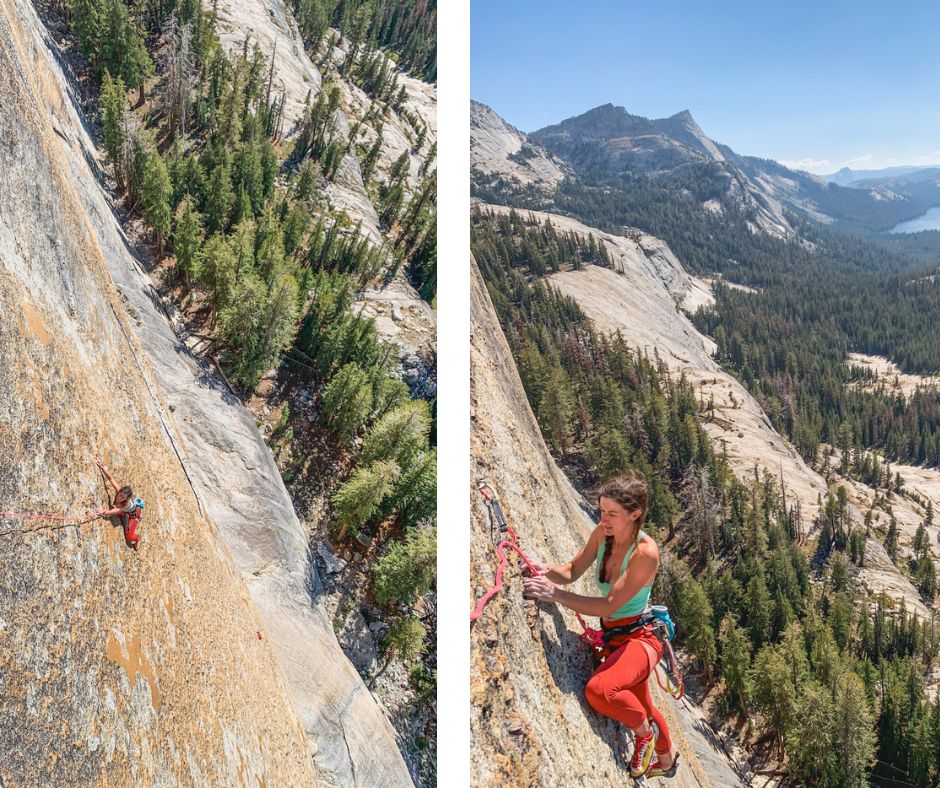
Speak to any climber, and they’ll know Yosemite - the Valley - home to Half Dome (one of the world's most extreme walks) and the towering granite face of El Cap. Unfortunately, with our six-month US visa quickly running out and the need to cross into Mexico becoming more urgent, El Cap would have to wait for another trip. But we still had time to sample some of Yosemite’s legendary smaller multi-pitch and single-pitch climbs.
It was above the Valley, in Tuolumne Meadows, where we found our joint favourite route of the trip. Shipoopi, a four-pitch 5.12 PG13 that sits next to some of the most famous (and intimidating) granite climbs in the world, like the runout nightmare of Bachar-Yerian (5.11 R/X) and the test piece Peace (5.13d) on Medlicott Dome. But for us, Shipoopi delivered the highest quality climbing and the biggest smiles of anywhere we’d climbed in the US.
A hybrid trad/sport route, it is better protected than its R/X-rated neighbour - but calling it a sport route would be generous. The first pitch starts with committing moves off a ledge with zero protection before reaching a cluster of cams in questionable rock. From there, a powerful sequence leads to the upper wall, where 100m of pure ‘chicken head’ pulling awaits. After the slightly sketchy start, almost every move is about squeezing tiny granite blobs, delicately meandering up what, from below, looks like a blank face.
The climbing was so good, we were almost scared to fall - worried it might somehow taint the experience. But we both held it together, making it to the final pitch: a 5.12a protected by a cruel, overhanging boulder problem. It was far harder than the grade suggested and demanded every last bit of pull we had left. A fitting reminder that even the ‘easy’ grades in this part of the world can be pretty humbling.
Top tips for a climbing road trip
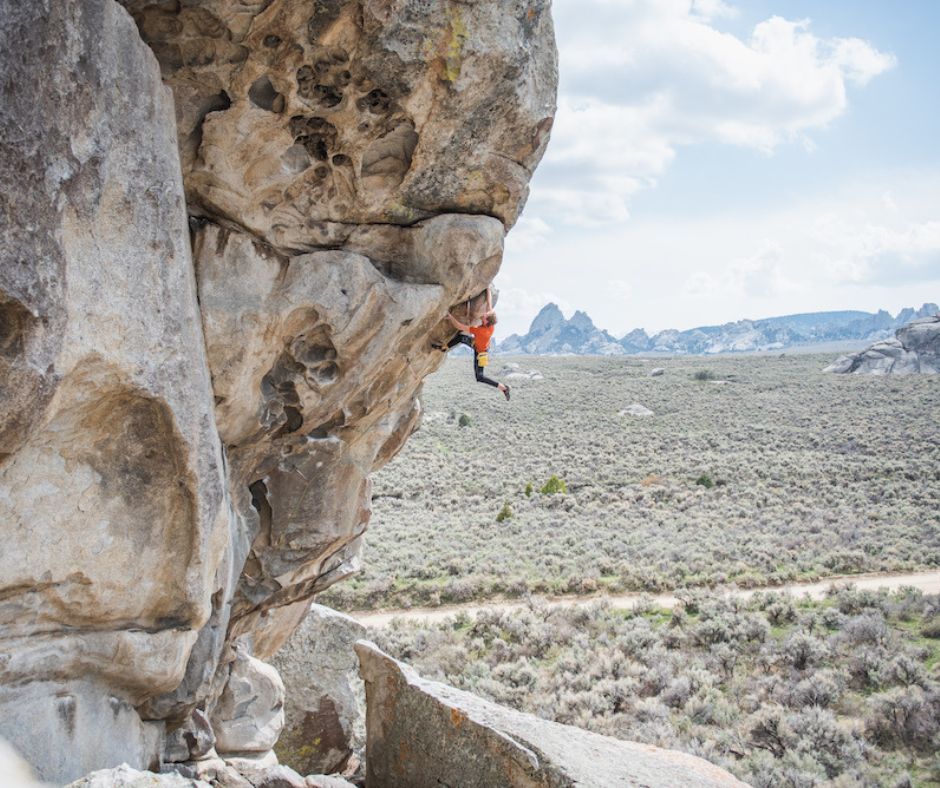
Stay connected
Remote work, route planning, or just relaxing on rest days - Starlink is a game-changer for van life. With high-speed satellite internet, you can stay online even in remote climbing spots, meaning fewer compromises between adventure and productivity. Our trip wouldn’t have been possible without satellite internet, as the US and South America have very poor coverage outside of major population hubs versus Europe.
Plan your route around the seasons
Climbing conditions vary massively depending on the time of year. Research crag conditions and plan a route that sees you climbing at each area as close to the optimum time of year as possible. If you’re doing a full Pan American trip like us, you will need to make some compromises, so prioritise the best conditions in the areas that are most important to you. We ended up in Ecuador and Peru in rainy season, which meant early mornings to get some climbing in before the rain arrived around lunchtime each day. But by making this compromise, we had perfect conditions for our time in Patagonia.
Ensure you stay powered
If you’re planning on a climbing road trip to remote locations, you need to ensure your electrical system can support your needs. Balancing battery capacity, solar power and charging via your alternator on long drives is important when you can’t rely on hook-up. If you need help designing your electrical system, check out Nohma, our electrical system design service.
Find the right balance between work and play
If you have the option to work remotely, you can go away for much longer and likely find a better balance between working and climbing. We’ve found that running our business means we actually take enough rest days! Having something to do when you’re not climbing gives you more purpose and direction, and also allows you to prolong your trip, potentially indefinitely!
Build a van that works for you
If you're working while you travel, your van needs to be a good remote working space as well as somewhere to sleep and eat. Our book, The Van Conversion Bible, covers everything from setting up off-grid power to creating a space that works for both work and adventure."



